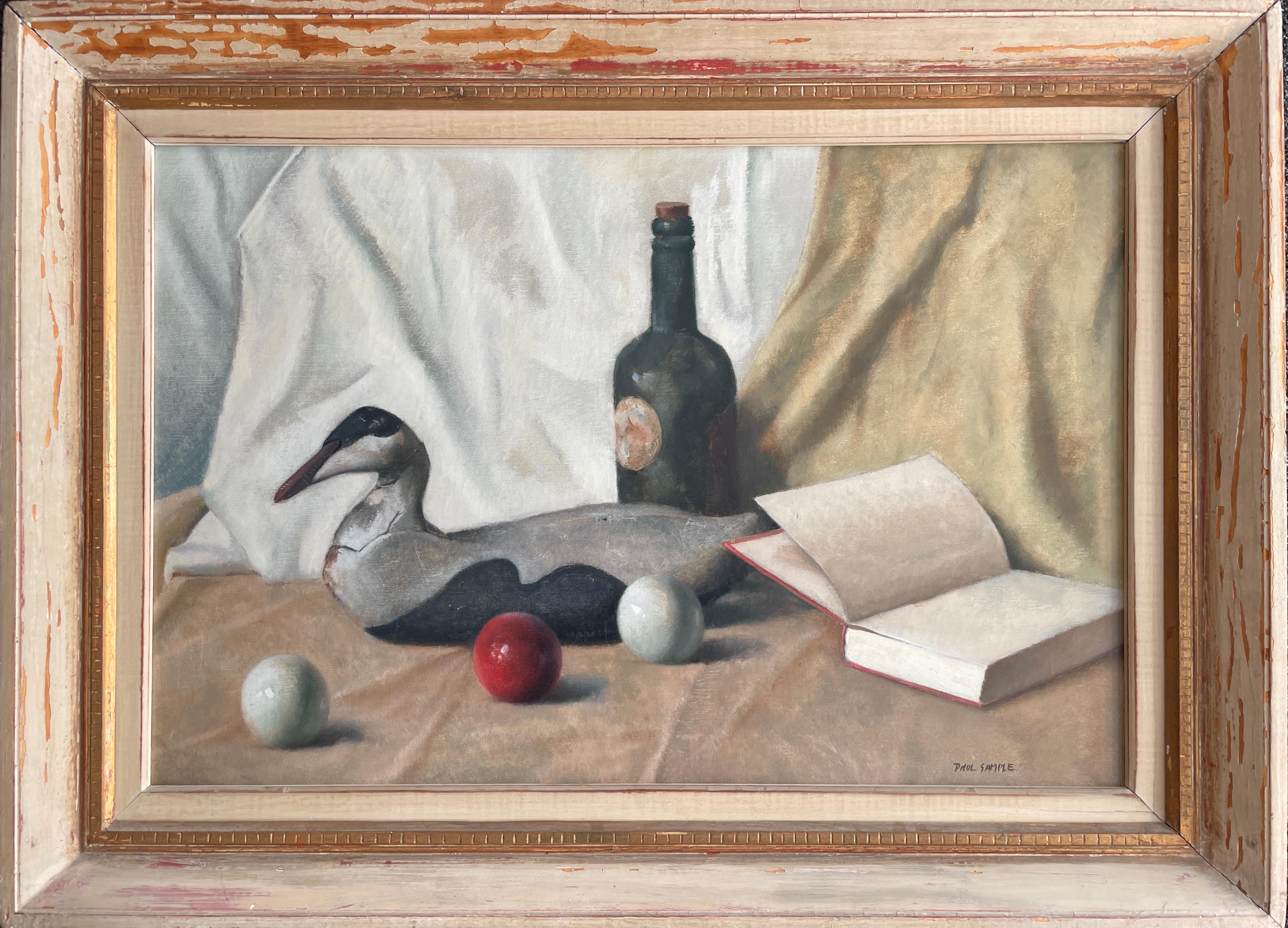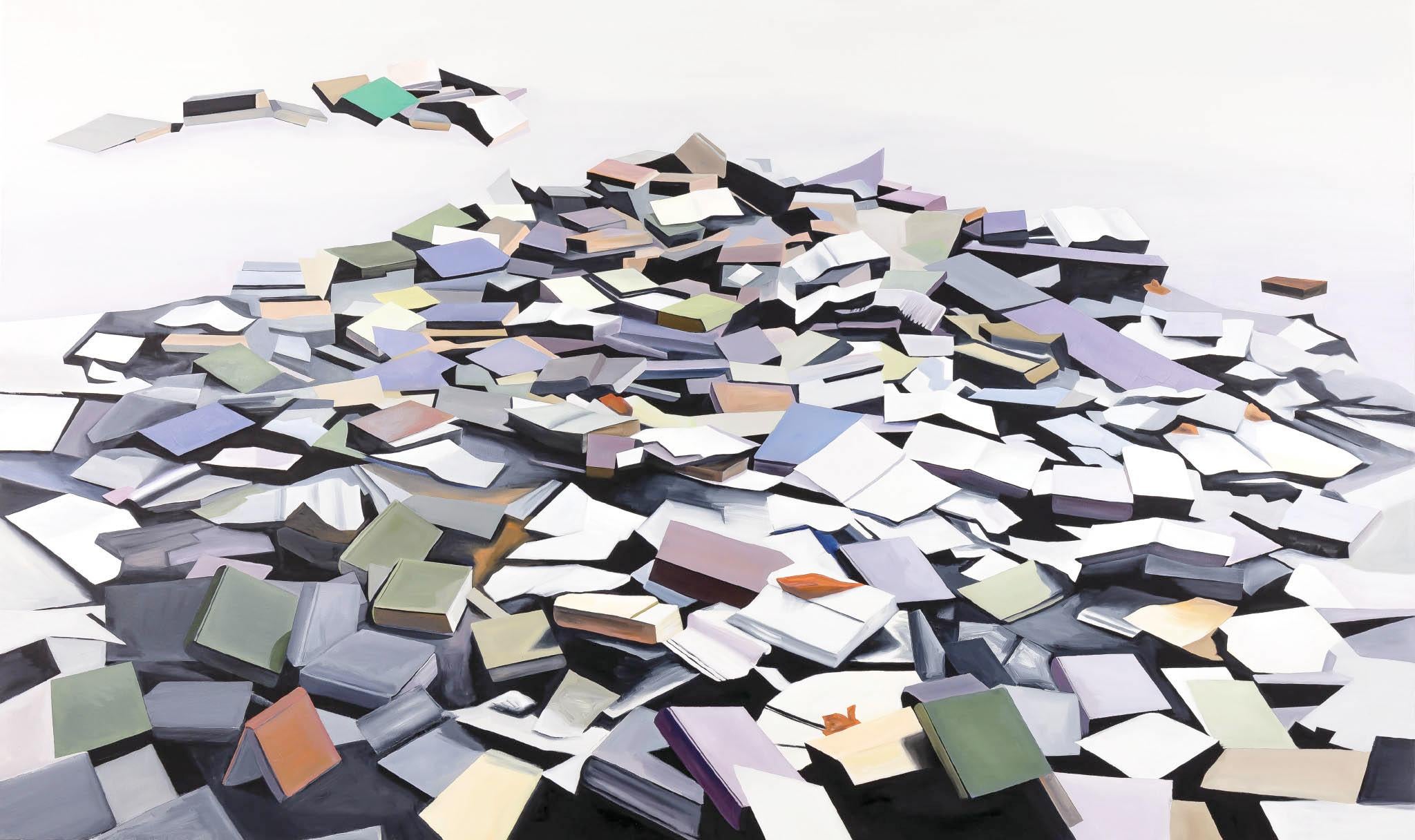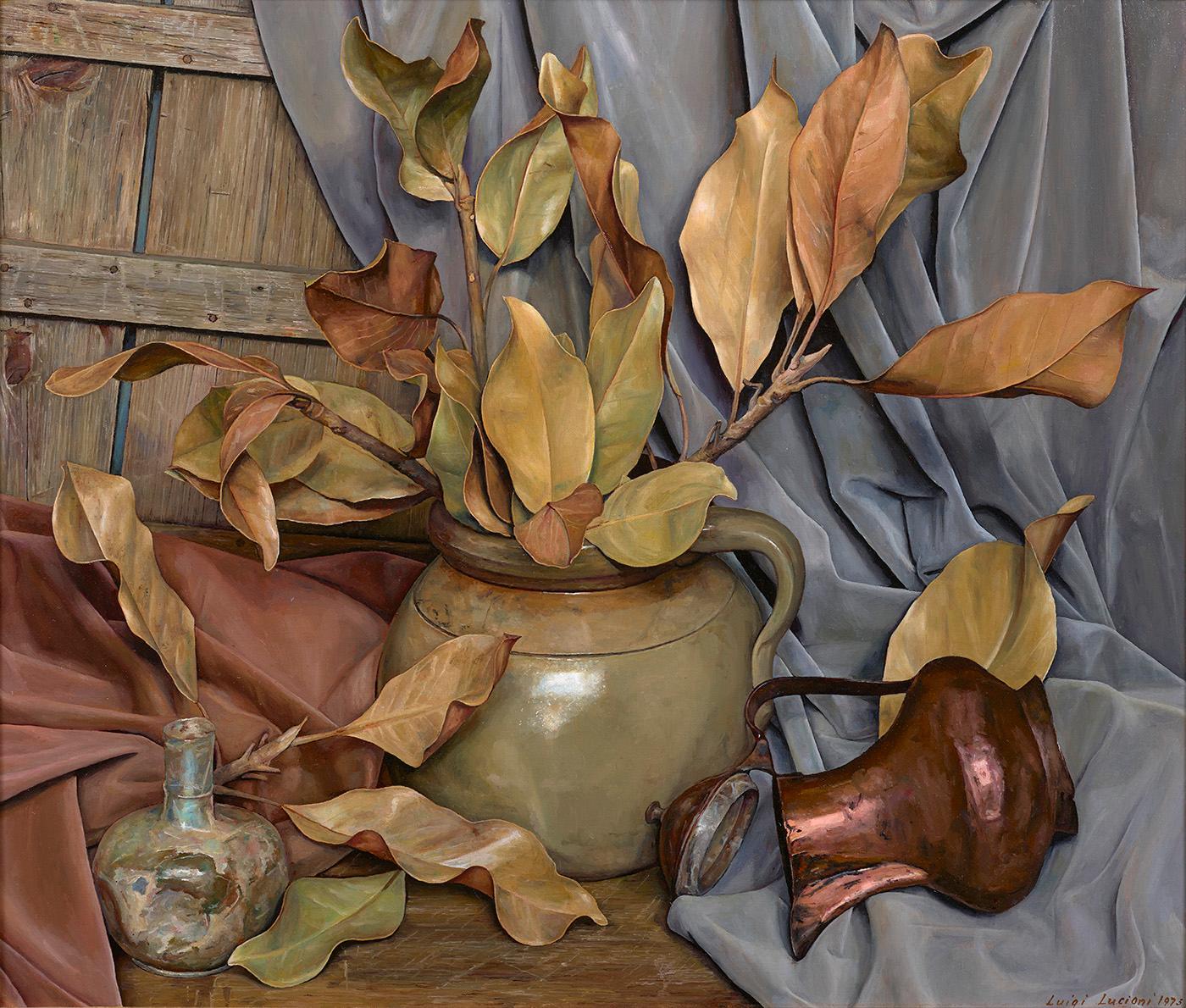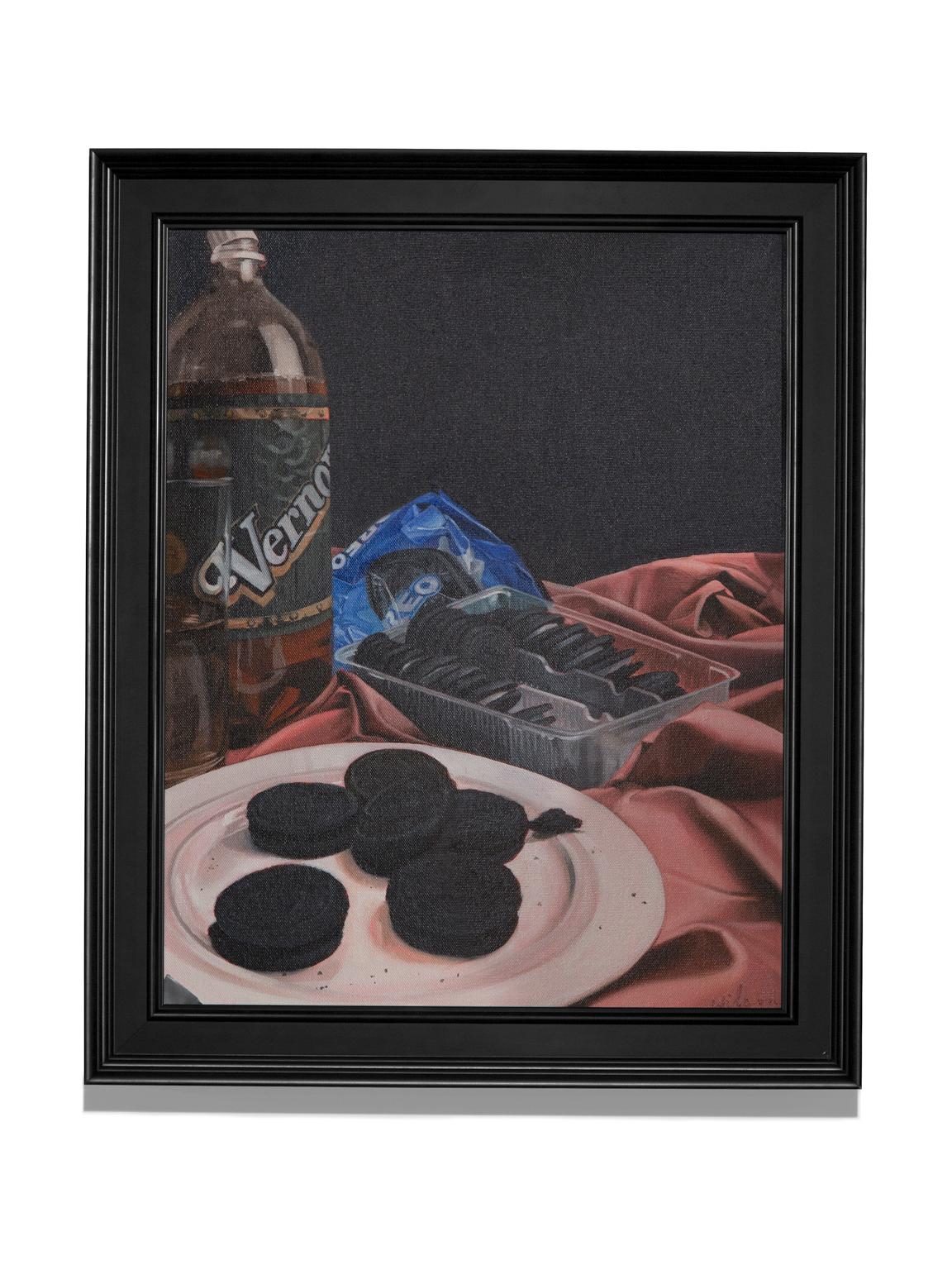Items Similar to Still Life with Vase of Flowers
Want more images or videos?
Request additional images or videos from the seller
1 of 11
Konrad CramerStill Life with Vase of Flowersc. 1929-30
c. 1929-30
About the Item
Still Life with Vase of Flowers
Oil on board with incised scraffito, c. 1929-1930
Unsigned by the artist
Signed and inscribed verso: "Painting by my father, Aileen B. Cramer" verso, the artist's daughter
Signed with the estate stamp verso
Exhibited:
Gerald Peters Gallery, Konrad Cramer and the Woodstock School, 2000. (label, see photo), Ny-00457-38-C
H. V. Allison Galleries, Inc. (label, see photo), HVA 0686
Condition: Excellent
Board size: 20 x 15 7/8 inches
Frame size: 24 3/8 x 20 3/8 inches
Provenance:
Estate of the Artist (estate stamp upper right verso of backing)
Aileen B. Cramer (inscribed: "Painting by my father Konrad Cramer" and signed in cursive script in ink, "Aileen B. Cramer," on board verso.
H.V. Allison Galleries, Inc. (label) HVA 0686
Gerald Peters Gallery, New York (label) Ny-00457-38-C
- Creator:Konrad Cramer (1888-1963, German)
- Creation Year:c. 1929-30
- Dimensions:Height: 20 in (50.8 cm)Width: 15.88 in (40.34 cm)
- Medium:
- Movement & Style:
- Period:
- Condition:Original, untouched condition.
- Gallery Location:Fairlawn, OH
- Reference Number:
About the Seller
5.0
Recognized Seller
These prestigious sellers are industry leaders and represent the highest echelon for item quality and design.
Platinum Seller
These expertly vetted sellers are 1stDibs' most experienced sellers and are rated highest by our customers.
Established in 1978
1stDibs seller since 2013
711 sales on 1stDibs
Typical response time: 1 hour
Associations
International Fine Print Dealers Association
- ShippingRetrieving quote...Ships From: Fairlawn , OH
- Return PolicyA return for this item may be initiated within 10 days of delivery.
More From This SellerView All
- Still Life with FlowersBy Emil GansoLocated in Fairlawn, OHStill Life with Flowers oil on board, c. 1935 Signed lower left on table cloth (see photo) Done while the artist was in Woodstock, New York in the 1930's Provenance: Weyhe Gallery, New York Joseph Mark Erdelac, noted Cleveland collector of American Art Condition: Excellent Cleaned by Monica Radecki, South Bend Housed in a metal leaf American profile frame by Hackman Frames, Columbus Image/board size: 18 x 15 inches Frame size: 24-5/8 x 21-1/2 x 1-3/4 inches Emil Ganso (1895-1941) Ganso was born in Germany in 1895. At age 14, he apprenticed to a baker and then worked his way to America when he was 17. He worked in bakeries in Scranton, Pennsylvania; and Cincinnati and Akron, Ohio. By 1916, Ganso out of a job, and was living the life of a bohemian in New York City, sometimes on less than 30 cents a week.1 In 1921, Ganso painted a realistic nude on a bedsheet, and was forced by the police to remove it from an exhibition. The bedsheet with the painting was later stolen. He soon had a job baking again at $140 a month, and with time to spare for painting and study. Ganso quit baking in 1925 when a New York dealer gave him financial backing of $50 a week. Ganso prospered from his art after that. His work is in over 15 American museums, and the Print Club of Cleveland awarded him a $500 purchase prize for a wood engraving. A versatile artist, he painted a variety of subjects. (from a profile written by Clyde Singer) Museum holdings : Biblioteque National Paris; Boston Museum of Fine Arts; Brooklyn Museum; Cleveland Museum of Art; Kupferstich Cabinet in Berlin; Library of Congress; Metropolitan Museum of Art; Museum of Modern Art; New York Public Library; Victoria and Albert Museum in London; Whitney Museum of American Art. Exhibitions : (one-man) Weyhe Gallery 1926 - 1946; Washington Irving Gallery 1960; Retrospective at the Whitney 1941; Retrospective at the Brooklyn Museum 1944; William Benton Museum of Art at the University of Connecticut in1976. (1. from an exhibition catalog held at Marti Sumers Graphics in 1978 Courtesy: AskArt Source: Butler Institute of American Art Courtesy of D. Wigmore “Emil Ganso was born in Halberstadt, Germany in 1895 and came to the United States as a teenager. By 1914 Ganso was taking evening classes at the National Academy's School of Fine Arts while supporting himself as a baker. His work was soon identified by Erhard Weyhe who went on to show Ganso's work at the Weyhe Gallery. Ganso first exhibited at the Society of Independent Artists in 1921, as well as at the Salons of America from 1922 to 1925. By 1925 Weyhe Gallery began to represent Ganso which gave him the funds to spend his first summer in the art colony of Woodstock, New York in 1926. Weyhe Gallery continued to exhibit Ganso's work through the 1940s. In Woodstock Ganso met George Ault, Doris Lee, Charles Rosen, Katherine Schmidt, Eugene Speicher, Alexander Brook, Louis Bouché, Konrad Cramer, Leon Kroll, and George Bellows leading Ganso to settle in Woodstock and continue to benefit from Woodstock connections throughout his life. In 1927, the same year he settled in Woodstock, Ganso began to share a studio with Jules Pascin. Ganso printed Pascin's lithographs and prepared paper for him in 1927 to 1928 while Pascin was in America. In 1929 Ganso visited Pascin in Paris. Perhaps it was this Paris trip that sparked Ganso's interest in photography. By 1930 he was exploring photography as an art form, as well as an aid to his art compositions. Konrad Cramer, Yasuo Kuniyoshi, and Russell Lee were other Woodstock artists who joined Ganso in these photography pursuits. Ganso received a Guggenheim Fellowship in 1933 which he used to study and paint in Europe. In the 1930s Ganso also kept a studio at 54 West 74th Street, an artists' building where Walter Pach...Category
1930s American Modern Still-life Paintings
MaterialsOil
- Before the Cock Crow Twice, Thou Shalt Deny Me ThriceBy William C. GrauerLocated in Fairlawn, OHSigned lower right William C. Grauer Exhibited at the Cleveland Museum of Art "37th May Show," 1955.Category
1950s Paintings
MaterialsOil, Board
- Still Life with Fruit and a PitcherBy Beni E. KoshLocated in Fairlawn, OHEstate stamp verso: Beni E Kosh Collection #436 Frame: 22-1/4 x 16-1/2 x 1-5/8"Category
Mid-20th Century Contemporary Still-life Paintings
MaterialsOil
- Les Fruits 2By Charles Harris ( Beni Kosh )Located in Fairlawn, OHLes Fruits 2 Oil on masonite, 1967 Signed and titled lower right (see photos) Signed with the estate stamp verso: Beni Kosh Collection #254 (see photo) Condition: Good Board size: 7 ...Category
1960s Contemporary Still-life Paintings
MaterialsOil
- Still Life with Peaches and GrapesBy D.M. RidleyLocated in Fairlawn, OHStill Life with Peaches and Grapes Oil on paper, 1890 Signed and dated lower right (see photo) Image size: 5 8 5/8 inches Frame size: 10 x 13 1/2 inches Housed in the original frame ...Category
1890s American Realist Still-life Paintings
MaterialsOil
- LiliesBy Jane PetersonLocated in Fairlawn, OHJane Peterson (1876-1965) Lilies Oil on canvas, 1952-1953 Signed by the artist lower right: JANE PETERSON (see photo) Painting size: 29 x 23 inches Frame size: 38 x 32-1/2 x 1-1/2 inches Exhibited: The Pennsylvania Academy of the Fine Arts: One Hundred and Forty Eighth Exhibition of American Painting and Sculptures, January 25-March 1, 1953 (Photo of original label). Original tacks on stretcher where label was afixed. Label stolen while on exhibition. Exhibited: Childs Gallery, Boston, 2019- 2023 Jane Peterson was an artist who achieved significant critical attention and adulation over the course of her career. Following her first American solo exhibition in 1909, a critic observed, “There is not a dull canvas in the entire collection and everything is interesting”.1 Thirty-five years later, Historical Records published her biography in the almanac Prominent Women of New York.2 Regardless of her success, Peterson remained pragmatic as she always sought to challenge herself with new ideas and techniques. She spent a lifetime immersed in the practice of painting; as a student, teacher, and gifted artist. Peterson was a painter with little interest in self-promotion or the conventional achievements of an artist, as a result there has only been a moderate body of scholarship written about her posthumously. Peterson’s legacy is her brilliant oeuvre of impressionistic paintings, held by collections such as the Metropolitan Museum of Art, the Philadelphia Museum of Art, and the Brooklyn Museum of Art. "Jennie Christine Peterson was born in Elgin, Illinois in 1876. From an early age Peterson, who was known throughout her life as Jane, showed a natural talent for drawing. As a teenager, having received no formal art training, Peterson sat the art aptitude test conducted by the Pratt Institute. The results were promising and, in 1895, Peterson moved to New York to study at the Pratt Institute in Brooklyn. Peterson thrived at Pratt as a conscientious student, although it was not an easy time for her financially. When her money ran low Peterson gave art lessons to other students, and also earned some income through the sale of her paintings in student exhibitions. When Peterson graduated in 1901, she began working as Drawing Supervisor of Public Schools in Brooklyn. She also continued her art education taking classes at the Art Students League. Between 1904 and 1906 Peterson worked as an art teacher in New York, Massachusetts, and Maryland. In 1907, Peterson sailed to Europe where she visited artists and museums in France, Holland, and Italy. She found Europe to be more socially progressive for women artists and decided to stay and continue her art education. While in Europe, Peterson studied under Frank Brangwyn at the London School of Art, before relocating to Paris where she received instruction from Jacque-Emile Blanche, Charles Cottet, and Claudio Castelucho. Throughout 1908, Peterson was extremely productive, creating many works in her spare time while also taking on portrait commissions to augment her income. She lived in rooms in Montparnasse located around the corner from Gertrude Stein’s salon, where on Saturday evening artists and art enthusiasts would gather to view and discuss Stein’s seminal collection of Modern art. Attending these events Peterson surrounded herself with powerful art luminaries such as Pablo Picasso, Henri Matisse, Georges Braque, André Derain, and Henri Rousseau. Peterson’s style from this period is neither entirely academic nor avant garde. Rather she blends the technical skills of her academic training with the loose brushwork and bold color palette of her contemporaries to produce paintings that are beautiful impressions of life. Peterson’s early oil paintings from Europe...Category
1950s American Impressionist Still-life Paintings
MaterialsOil
You May Also Like
- The Wood Decoy oil painting by Paul SampleBy Paul SampleLocated in Hudson, NYSigned "Paul Sample" lower right; titled and signed verso: "The Wood Decoy" & "Paul Sample" in pencil in the artist's hand. Paul Sample was an acclaimed Ne...Category
Mid-20th Century American Modern Still-life Paintings
MaterialsCanvas, Oil
- Abandoned BooksLocated in San Luis Obispo, CAeffrey Long, the elder son of a commercial graphic artist at Time & Life, was born in New York City in 1948. In 1970 Long received a BFA in Illustration and Art Education from Rhode Island School of Design and had decided to be a painter. His paintings from this period were photo realistic portraits and figures set in landscapes. On graduation, he married and began teaching art in a Rhode Island public school system. From 1971 through 1973 he was a resident artist at the Rockefeller-funded Pulpit Rock Community in Woodstock, Connecticut. Works from this intensive period were representational, highly dynamic, and borrowed from the vocabulary of cartoons. In early 1974 Long moved to the San Francisco Bay Area, where he obtained a full scholarship at California College of Arts & Crafts (now California College of Arts). There he received an MFA in painting in 1976. He established various studios in Oakland and Emeryville, while also working as a Curatorial Assistant at The Oakland Museum. The museum brought him in touch with such California artists as Richard Diebenkorn, Elmer Bischoff, Manuel Neri, Joan Brown, Jay de Feo...Category
2010s American Modern Interior Paintings
MaterialsOil
- Harmony in Minor KeyBy Luigi LucioniLocated in New York, NYSigned and dated lower right: Luigi Lucioni 1973Category
Late 20th Century American Modern Still-life Paintings
MaterialsCanvas, Oil
- Henry Ernst Schnakenberg, (Still Life with Scull)By Henry Ernst SchnakenbergLocated in New York, NYHenry Schnakenberg is mostly known for New York City scenes. This is clearly a departure. It is signed at the lower left and dated '4-53' on the r...Category
1950s American Modern Still-life Paintings
MaterialsOil
- Dance Wands, Modernist Southwestern Still Life and Cultural CommentaryLocated in Doylestown, PA"Dance Wands" is a 36 x 24 inches, oil on canvas painting by American modernist and surrealist, female artist Peter Miller. The work is painted in a vibrant color palette, signed and...Category
1950s American Modern Still-life Paintings
MaterialsCanvas, Oil
- Charles McGee Oil Painting "Squares and Things" African-American 1967By Charles McGeeLocated in Detroit, MI"Squares and Things" painted by the eminent artist, Charles McGee, literally breaths his African American heritage and his extraordinary vibrant use of colors. Provenance is The Arwin Galleries on Grand River in Detroit, Michigan - label on verso. This early painting of McGee's shows his mastery in creating a painting in the style of the French Impressionist Edouard Manet, "Still Life with Melon and Peaches" located in the National Gallery of Art, Washington, DC, and in the style of Fauvist/Expressionist painter Henry Matisse, "Still Life with Blue Tablecloth", located in the Hermitage Museum, Saint Petersburg, Russia. McGee makes the well-known genre of still life his own creating an exciting marvelous work incorporating the homely quilt - the powerful symbol of the African American road to safety from slavery - as his main focus. Quilts symbolize warmth, comfort, and as shown by the collection of quilts gathered by the artists in Gee's Bend the designs on the quilts hung outdoors at locations along the Underground Railroad showed fugitives the road north and to safety. "Squares and Things" was first shown at The Arwin Galleries, Inc., Detroit, Michigan, one of the stops along the Underground Railroad. This piece is signed by the artist, Charles McGee, and is an extraordinary example of his early work before he moved into Abstract Expressionism and his many sculptural works now located throughout Michigan. Several of these works are: "Noah's Ark: Genesis, 1984," on display at the Detroit Institute of Arts, his brilliant 2005 "Progression" a 45-foot wide aluminum sculpture at Beaumont Hospital, Royal Oak, Michigan, and his stunning 2016 "United We Stand" sculpture at the Charles H. Wright Museum of African American History . His genius can be seen in sculpture installments throughout the city of Detroit. . He was born into a family of sharecroppers. While helping his grandfather tend the land, "he observed firsthand the order and harmony that exists within nature." He had no formal schooling until moving to Detroit at age 10, where he found that "everything was on the move and it hasn’t slowed down yet." in 2017 he observed, "I learned something not being in school — because life is school . . .I learn something every time I move. Every time I go around a corner, something new is revealed to me.” McGee took advantage of the GI Bill to attend classes at the Society of Arts and Crafts, now the College for Creative Studies, Detroit, MI. Other College for Creative Studies (formerly Center for Creative Studies) faculty and graduates include Richard Jerzy, Harry Bertoia, Doug Chaing (currently director of Lucas Film), Stephen Dinehart (game maker, writer, designer connected with The David Lynch Foundation), Tyree Guyton (international artist), Herb Babcock, Jerome Feretti, Kevin Siembieda (writer, designer and publisher of role-playing games), Renee Radell, and Philip Pearlstein. After retiring from the Corps of Engineers, McGee spent 1968 studying art in Barcelona. Despite not knowing the language at the outset, he immersed himself in the culture and opened himself to a whole new range of experience that would play out in his artwork. "If you free yourself, you have this kind of opportunity to have those experiences, horizons, and new vistas." (per interview with Nick Sousanis author of a book on Charles McGee.) He returned to Detroit and curated "Seven Black Artists" at the Detroit Artists Market in 1969, which along with McGee himself, included Lester Johnson, Henri Umbaji King, Robert Murray, James Lee, Allie McGhee...Category
Late 20th Century American Modern Still-life Paintings
MaterialsOil, Masonite
Recently Viewed
View AllMore Ways To Browse
Vase Of Flowers
Artists Daughter
Flowers Painted Modern Art
Still Life With Vase
Gallery Inc
Flower Vase Paintings
Photos Of Flowers
Painting Flowers In Vase
Paintings Flowers And Vases
Vase Of Flowers Painting
Paintings Of Flowers In Vases
Father Daughter
Vase With Flowers Painting
Flower Painting H
Script Art
Signed Script
Ny Estate
Script Painting




